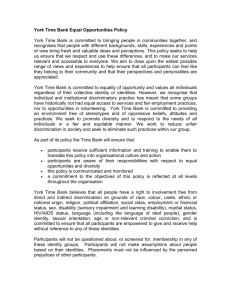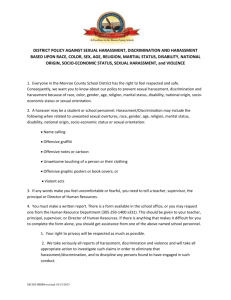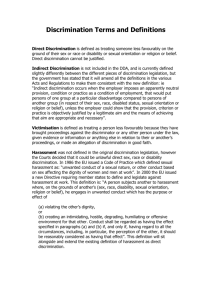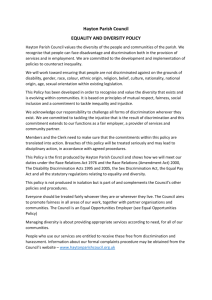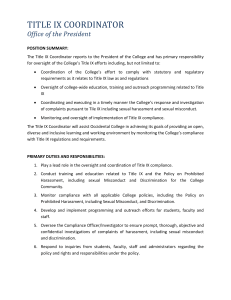DRAFT SCHOOL DISTRICT NO. 58 NICOLA
advertisement
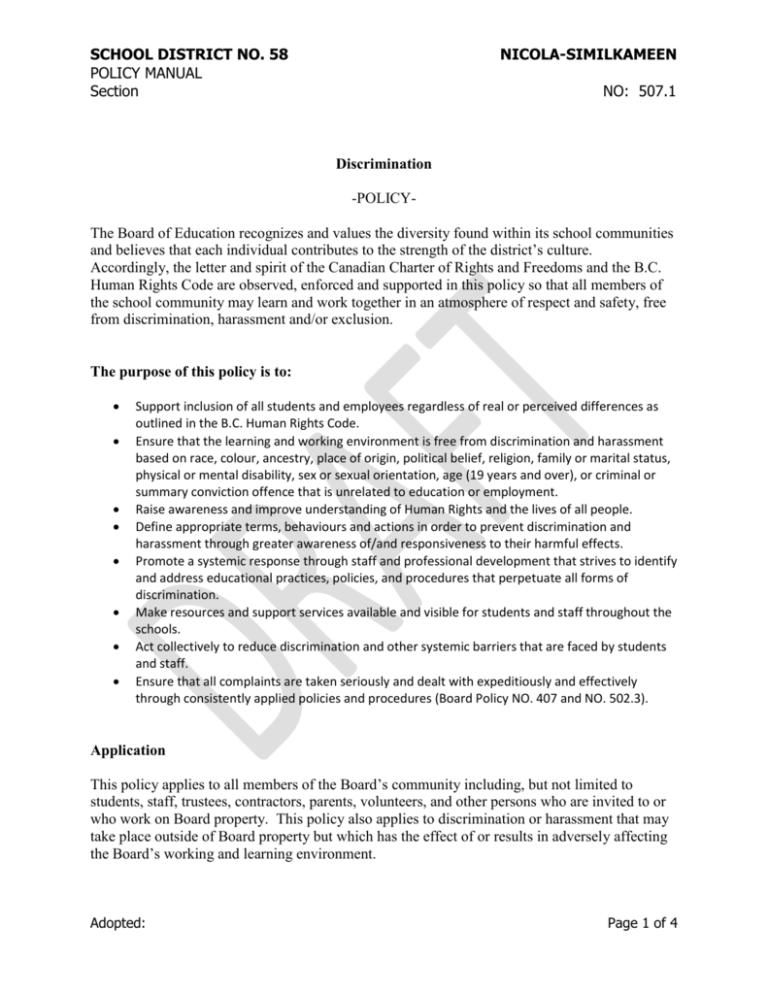
SCHOOL DISTRICT NO. 58 POLICY MANUAL Section NICOLA-SIMILKAMEEN NO: 507.1 Discrimination -POLICYThe Board of Education recognizes and values the diversity found within its school communities and believes that each individual contributes to the strength of the district’s culture. Accordingly, the letter and spirit of the Canadian Charter of Rights and Freedoms and the B.C. Human Rights Code are observed, enforced and supported in this policy so that all members of the school community may learn and work together in an atmosphere of respect and safety, free from discrimination, harassment and/or exclusion. The purpose of this policy is to: Support inclusion of all students and employees regardless of real or perceived differences as outlined in the B.C. Human Rights Code. Ensure that the learning and working environment is free from discrimination and harassment based on race, colour, ancestry, place of origin, political belief, religion, family or marital status, physical or mental disability, sex or sexual orientation, age (19 years and over), or criminal or summary conviction offence that is unrelated to education or employment. Raise awareness and improve understanding of Human Rights and the lives of all people. Define appropriate terms, behaviours and actions in order to prevent discrimination and harassment through greater awareness of/and responsiveness to their harmful effects. Promote a systemic response through staff and professional development that strives to identify and address educational practices, policies, and procedures that perpetuate all forms of discrimination. Make resources and support services available and visible for students and staff throughout the schools. Act collectively to reduce discrimination and other systemic barriers that are faced by students and staff. Ensure that all complaints are taken seriously and dealt with expeditiously and effectively through consistently applied policies and procedures (Board Policy NO. 407 and NO. 502.3). Application This policy applies to all members of the Board’s community including, but not limited to students, staff, trustees, contractors, parents, volunteers, and other persons who are invited to or who work on Board property. This policy also applies to discrimination or harassment that may take place outside of Board property but which has the effect of or results in adversely affecting the Board’s working and learning environment. Adopted: Page 1 of 4 SCHOOL DISTRICT NO. 58 POLICY MANUAL Section NICOLA-SIMILKAMEEN NO: 507.1 The Board will work to ensure: Education: The promotion of opportunities for all staff to increase their understanding of the Canadian Charter of Rights and the B.C. Human Rights Code. The promotion of opportunities for all staff to increase their awareness of the scope and impact of discrimination and harassment. Schools provide age-appropriate activities that promote an understanding of Human Rights and the impact discrimination has on an individual or group. Safety: Schools develop student Codes of Conduct with one or more statements that address the prohibited grounds of discrimination as set out in the B.C. Human Rights Code. Schools create support systems for individuals or groups being discriminated against or harassed. Learning and Curriculum Resources: That current and promising practices, which promote safe and inclusive environments for youth, be identified and shared with school staffs. Definitions For the purpose of this policy, the following definitions are fluid, continue to evolve and sometimes reference the B.C. Human Rights Code “the Code”: Age in relation to “the Code” age is defined as “an age that is 19 years and over.” Disability as defined by “the Code” is very broad. It includes any degree of physical, developmental, mental or learning disability. Discrimination occurs when someone is treated differently and poorly because of their race, colour, ancestry, place of origin, religion, marital or family status, physical or mental disability, sex, sexual orientation, age (19 years and over), criminal conviction (in employment), or lawful source of income (in tenancy). Adopted: Page 2 of 4 SCHOOL DISTRICT NO. 58 POLICY MANUAL Section NICOLA-SIMILKAMEEN NO: 507.1 Diversity refers to the ways in which we differ from each other. Some of these differences may be visible (e.g., race, ethnicity, gender, age, ability), while other are less visible (e.g. culture, ancestry, language, religious beliefs, sexual orientation, socioeconomic background). Exclusion is the act of not allowing someone or something to take part in an activity or to enter a place. Family status is defined in “the Code” as being in a parent and child relation. The ground of family status protects non-biological parent-and-child relationships, such as families formed through adoption, step-parent relationships, foster families, non-biological gay and lesbian parents and all persons who are in a “parent-and-child-type” relationship. Harassment is a form of discrimination. Harassment occurs when a person is subjected (often repeatedly) to unwelcome comments or behavior that is insulting or demeaning, or is otherwise offensive. Marital status is defined as the status of being married, single, widowed, divorced or separated and includes the status of living within a conjugal relationship outside of marriage. The definition applies to common-law, same–sex and opposite-sex relationships Race is broadly defined by “the Code” and includes the grounds of colour, ancestry, and place of origin. In addition to physical characteristics such as colour, the following characteristics are commonly racialized: language accent or manner of speech name clothing and grooming diet beliefs and practice leisure preferences citizenship Religion includes faith, beliefs, observances or worship. Religion may be broadly interpreted to include non-deistic bodies of faith, such as the spiritual faiths/practices of Aboriginal cultures, as well as new religions. Sex is related to a person’s biological sex, male or female; however, it also includes a broader notion of gender which can be described as the social characteristics attributed to each sex. Adopted: Page 3 of 4 SCHOOL DISTRICT NO. 58 POLICY MANUAL Section NICOLA-SIMILKAMEEN NO: 507.1 Sexual orientation encompasses the range of human sexuality from gay and lesbian to bisexual and heterosexual orientations, including intimate emotional and romantic attachments and relationships. Examples of sexual orientations and terms include, but are not limited to: LGBTQ Lesbian Gay Bisexual Transgender Transsexual Queer Questioning Two-spirited Heterosexual Related Policies No. 407 – Respectful Workplace No. 502.3 – Bullying and Harassment Adopted: Page 4 of 4
